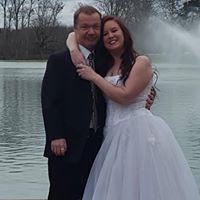Leaderboard
Popular Content
Showing content with the highest reputation on 10/12/2019 in Posts
-
I took into account all your feedback and created a new version of the song. I still have the squeaky tone sometimes, but will continue working on lifting my fingers more when playing. I think its complete now and a friend suggested to publish it as a demo. Thanks again for listening! 🙂1 point
-
I was thinking of the movie "Creed" while making this. I wanted to make something cinematic that was driven and felt like the progress of a noble cause.1 point
-
I think this is a witty (elegant) stylization to the music of Viennese classics. You even score wrote as Mozart 😃 And I don't know why you have noticed the structure of this work as "quasi-rondo". As for me it is a real rondo without any "quasi". All my teachers always said that rondo must have five parts or more and the main theme must be returned three times or more. The size of composition is not important. P.S. I'm sorry if I understand something here incorrectly or if I said something wrong. My English is not good.1 point
-
Yes but unlike the usual the usual ways of counterpoint, the voices are not as individual or free (because they serve the purpose of being parallel). At least that’s what I’ve said. You should also research this things by your own. The main thing here is that you’ve found an emotional way to use the sounds! The theory comes later. So thank you for sharing 🙂1 point
-
It's nice. I was put on perhaps too much of a tempo ride with the ritardandos in the fast section... I kind of wanted for it to just keep going, you know?1 point
-
OP defined parallel harmony as parallel related tonalities, or at least that's what I infer they meant by their post. You are defining it differently, as a method of harmonic planing, and there are two variants: diatonic and chromatic, which, yes, would correspond to the Finale transposition options available. The idea behind planing, is that voice leading remains in constant structured harmony, oven supporting a melody line either explicitly or secondarily.1 point
-
If we're defining parallel harmony that way, look up the term "planing", specifically "chromatic planing".1 point
-
I see it this way: To define “parallel harmony”, it think it would be good to analise the term a little. Roughly speaking, harmony takes place when we play notes simultaneously, usually more than two. (That doesn’t necesarily mean that there is a key — although it may suggest it). When we have more than two of this combination of notes (called chords), we perceive the moving of the notes as “voices”: moving melodic lines. On the other hand, there are three basic forms of contrapuntual motion: oblique, contrary and similar. Parallel motion is a type of similar motion (or at least that’s a way to look at it). In similar motion, the two (or more) voices move in the same direction, but not necessarily result in the same interval as they started. In parallel motion, the two (or more) voices move in the same direction AND result in the same interval as they started. For example, if you have a set of notes C, E and G —in the same octave— and you move them up a minor third by parallel motion, you will get Eb, G and Bb. So, when we talk about parallel harmony, we mean that the voices that constitute the harmony move in parallel motion. If you search Parallel Harmony in Google, you’ll find several visual examples of that. The use of parallel harmony often results in “shifting to "unrelated" keys that are identical”, but it isn’t just that, so I wanted to make sure you know this. I hope it worked. Luis Hernández mentioned Debussy and I think it will be illistrative to look at his music. The first bars of this prelude by him use parallel harmony. Notice that in this piece not every possibility of parallel harmony is used. There are many cool things you can do with it! I hope it helps 🤔😁 P.S.: Also notice that some parallel movement in a piece of music doesn’t necessarily imply that the music has parallel harmony. I was listening to Corcovado by Darius Milhaud, and it has a bit of parallel motion in the harmonization of a melody, but that doesn’t mean that he is really using parallel harmony.1 point
-
Hi! Now that you mentioned that you like to jump a major 3rd with this major and minor chords, you reminded me of Prokofiev. Have you seen how he uses chords (mostly major) in a non-functional manner? “Non-functional” meaning “used in a coloristic way”, or at least thats one way to look at it. Maybe you can check out this video if you haven’t already, to see what I mean: It’s not parallel harmony, but I thought it could help.1 point
-
Cool! I enjoyed to listening this music. Your composition has bright orchestration, interesting harmonization and expressing melody. You showed a mastery in every elements of music language.1 point
-
Sounds like a lost ship looking to kick some stellar butt out there somewhere. Very driving, well done. Might be interesting to see it stripped down to the percussion only, then built back up, as I love the beat. Take care.1 point
-
OK, but you keep thining in those classic terms all the time, and that's fine. From my point of view (not only mine, thank God) those forms have trascended from what they exactaly were into other things. It's like if you take "the idea" or "your idea" of what a sonata is, not thinking in its exact structure and rules. If not, how do you explain, for example, the Sonata for Cello and Piano by Webern (atonal) lasting about 2 minutes? The composers named it Sonata. Was he wrong? https://www.youtube.com/watch?v=P6fcALtNgIA1 point
-
The first one has some "aggresive" sounds, and with all those arpeggios up and down. Although I suppose it fits with the project. The second is lovely and pleasant, nice clashes in harmony. The third is quite good, I love the broken rhythms and that sort of oriental flavor.1 point
-
I'm focusing on ice world because I love snow and winter 🥰 The interval stacks are nice but get a little repetitive, and it's super noticeable because of the register. I think what made me get a little tired of them too was the fact that they follow in the harmony as though in diatonic planing. I think maybe having given it a little more flavor by inverting it to form a sort of stacked voice set would have been really nice. Your melody and rhythmic mixups are great and really help this get off the ground from the getgo. Your triplets later are super great as well.1 point
-
This piece started out as the opening bars to movement II, which came to me while trying to sleep one night. The basic idea of movement III is one that I've had in my head for a couple years, ever since I wrote my first wind band piece in 2016/17. After that, movement I started with just me putting down notes to see what would happen. I've tried to experiment more with having instruments 'bleed' into each other (you can see this mostly in movement II), which is something I don't see much in most wind band writing. I haven't really pushed my harmonies that much (by my standards anyway) - I'm a bit reluctant to do that in a wind band context, because I don't think there's as much leeway as there is in the orchestral world, and I don't even feel a strong need to just yet. At the same time, though, I'm really proud of quite a lot of this piece, and I think it shows a few things that you can do with harmonies without necessarily pushing them to their absolute limits. I've tried to play around a bit with traditional wind band expectations, especially with regards to percussion, and I will continue to do so. I've always wanted to give a melodic solo to the temple blocks, for instance, and finally did so here in movement III. I also rebelled a little against using bass drum/cymbals in the traditional accompaniment oom-pah way, which is why I gave them a solo too. I worry a little that the movements are a little short, because I think each one could potentially go on for a full 5-6 minutes at least with their material. However, short individual movements is pretty common in wind band writing, and if the piece as a whole has a consistent feel and sound then I think it still works.1 point




